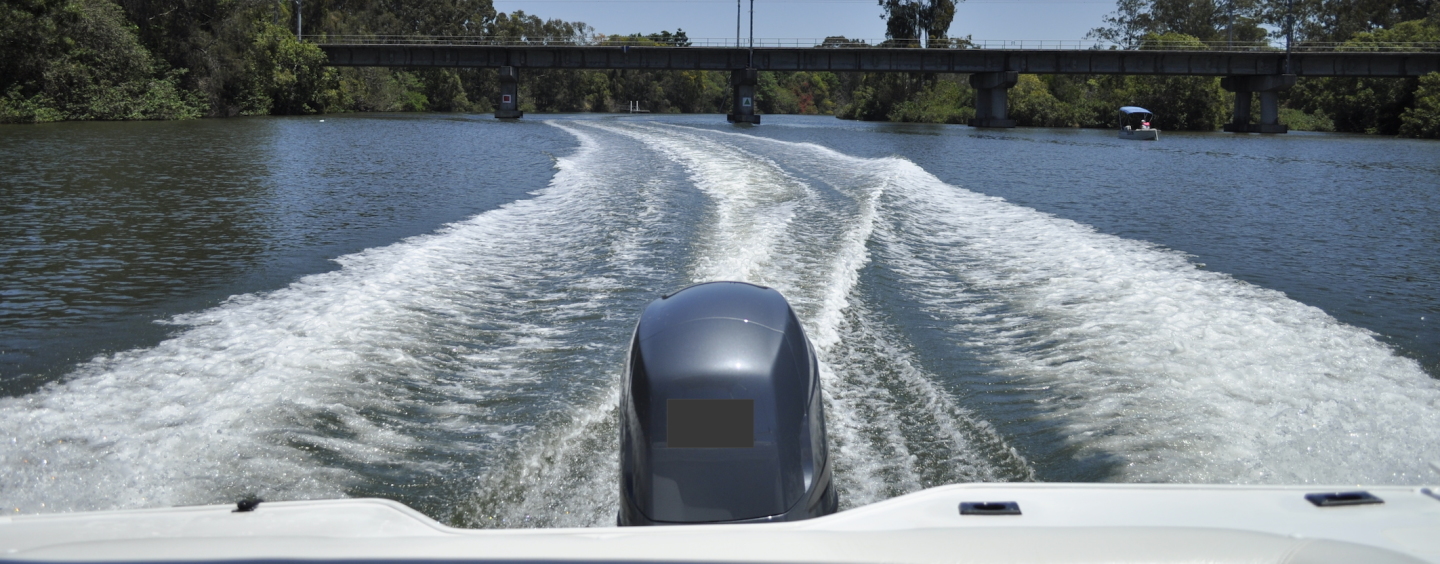When deciding on your boat, you will also need to consider whether you would want an inboard or an outboard engine, or an inboard/outboard. In this article, we provide the basic information about these engines and their benefits and challenges. Ultimately, however, it is your own boating needs and personal preference that will affect your buying decision.
Outboard engine benefits
An outboard engine is a portable complete package of engine, gear case and propeller. For general purpose boating, the outboard engine offers easy handling and economic fuel consumption and ongoing maintenance. When in operation, the special designed skeg and directional thrust of an outboard enables easy maneuvering with lower power. When not in use, the engine can be completely tilted out of the water, avoiding any growth of marine organisms, barnacles and algae.
The outboard is mounted high up on the hull and is easy to access for service requirements. The engine casing creates a fully integrated seal and shields the powerhead that houses the electronic and mechanical parts. Outboard engines are generally very reliable, making them popular with family pleasure boating, fishers and other light commercial inshore usage. Once the boat is parked on a trailer, the entire engine system is within easy reach for maintenance.
Inboard Engines vs Sterndrives
Mounted amidship, the inboard engine drives a propeller shaft that is fixed to the bottom of the hull and is steered by a rudder, whereas an inboard/outboard (also known as a stern drive) is mounted in the stern of the boat that drives a directional outdrive (or drive leg) that is mounted thru the rear of the hull (transom).
An inboard engine provides greater stability for your boat, which is well suited for large commercial vessels, offshore work, and for some types of waterskiing. It is popular with commercial boats as it has a lower centre of gravity creating stability. The midmounted inboard is used for heavier vessels requiring more horsepower, as the size and weight of the engine would not be appropriate for a stern mounting. A boat with an inboard engine will be more difficult to load onto a trailer.
If you plan to use the boat for slalom skiing, then the inboard engine’s propeller with a separate rudder is popular as it produces little or no wake. The midship engine is not an ideal position for a pleasure craft, whereas inboard/outboards engines can be neatly mounted under the rear bench or swim platform.
An inboard/outboard with its shallow draft will be easier to maneuver in shallow waters such as those around the Gold Coast Broadwater and estuaries. The drawback is that inboard/outboards do not steer effectively unless thrust is applied; as a result, docking is more challenging.
Inboard engines are located in the bilge of the boat and sometimes have restricted to access through a hatch in the floor. This area is vulnerable to moisture and water damage. Similarly, the stern-mounted inboard/outboard is located in the bilge under the rear lounge or deck, which may have restricted access. However, some models have sealed engine rooms with space to store tools and equipment.
For a sleek design and sophistication, inboard/outboard engines are a popular choice. When towing with an inboard/outboard, the weight of the engine in the stern will create a wake, which is ideal for wakeboarding. Recreational boat owners may prefer the inboard/outboard engine tucked away which allows for free access of the rear lounge, full-width swim platforms, storage and outdoor showers. The inboard/outboard also allows space under the deck for a cabin with accommodation and amenities popular with cruiser boat builders.
By Andy Kancachian
Disclaimer
Information provided in this article is general in nature and does not constitute professional advice. While all reasonable care has been taken in providing accurate information, it is strongly suggested you consult a professional about the various types of engines before purchasing.
























